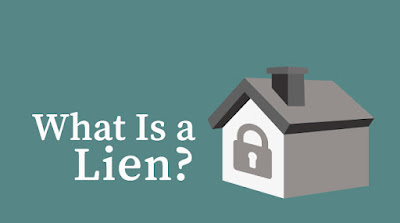Frozen Funds: Understanding Liens on Bank Accounts and Your Options.
A lien is a legal claim on an asset used as collateral in a transaction.
It is a crucial concept in banking and finance, as it provides a creditor with the legal right to seize and sell the collateral property or asset of a borrower who fails to meet the obligations of a loan or contract.
Judgment Lien: A lien placed on assets by the courts, usually as a result of a lawsuit.
Tax Lien: A lien placed on assets by the government for unpaid taxes.
In conclusion, a lien is an important concept in banking and finance, as it provides a level of security for lenders and ensures that borrowers have a vested interest in repaying their debts.
Purpose of a Lien
The primary purpose of a lien is to guarantee payment of a debt.
It can be used to enforce a judgment or secure payment on a loan.
A lien provides a level of security for the lender, as it ensures that the borrower has a vested interest in repaying the loan.
Types of Liens
There are three main types of liens:
Bank Lien: A lien granted when an individual takes out a loan from a bank to purchase an asset.
This type of lien is commonly used for vehicle loans, mortgages, and other secured loans.
Judgment Lien: A lien placed on assets by the courts, usually as a result of a lawsuit.
This type of lien is used to enforce a court judgment against a debtor.
Tax Lien: A lien placed on assets by the government for unpaid taxes.
This type of lien is used to collect unpaid taxes from individuals or businesses.
How a Lien Works
A lien provides a creditor with the legal right to seize and sell the collateral property or asset of a borrower who fails to meet the obligations of a loan or contract.
The process of placing a lien on an asset typically involves the following steps:
- The creditor files a lien with the appropriate government agency, such as the county clerk's office.
- The lien is then recorded in the public records, providing notice to anyone who may be interested in purchasing the asset.
- If the borrower fails to meet the obligations of the loan or contract, the creditor can seize and sell the asset to satisfy the debt.
Removing a Lien
A lien can be removed by paying off the outstanding obligations related to the lien.
Once the obligations are satisfied, the party that placed the lien will release it.
The process of removing a lien typically involves the following steps:
- The borrower pays off the outstanding debt.
- The creditor files a release of lien with the appropriate government agency.
- The release of lien is then recorded in the public records, providing notice that the lien has been satisfied.
In conclusion, a lien is an important concept in banking and finance, as it provides a level of security for lenders and ensures that borrowers have a vested interest in repaying their debts.
Understanding the different types of liens and how they work can help individuals and businesses navigate complex financial situations.












